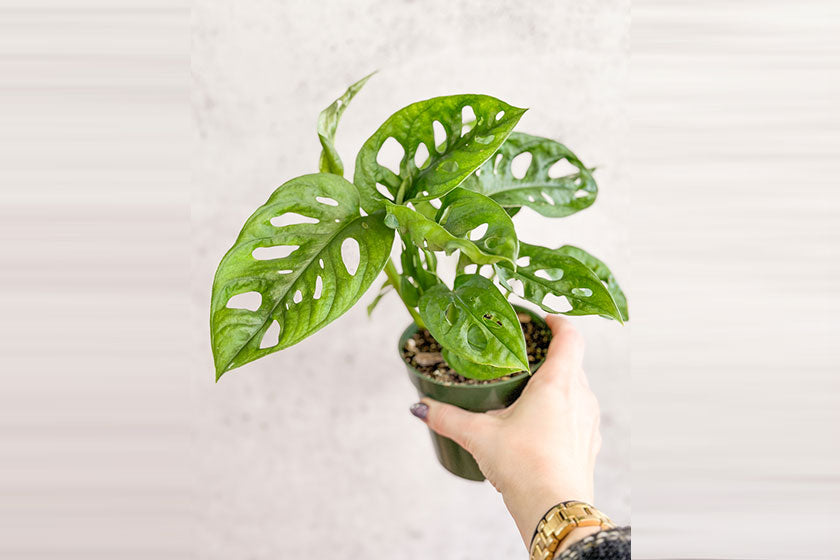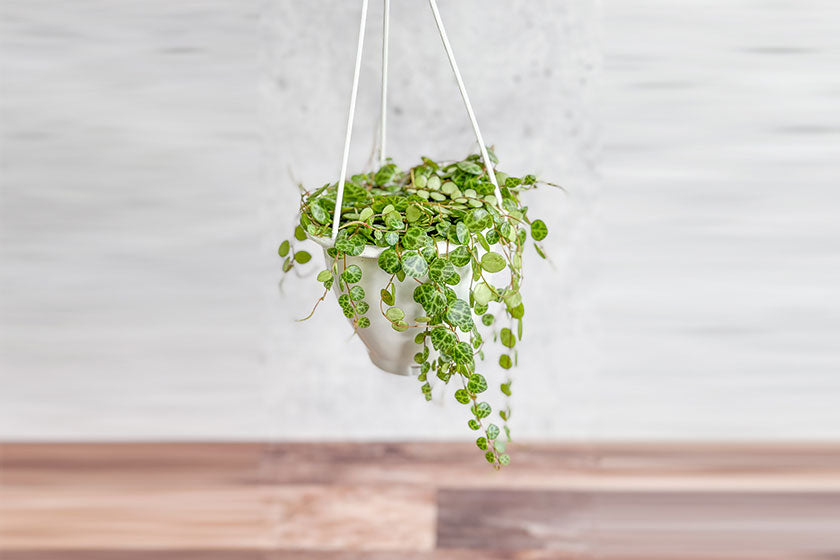Houseplants have long been a staple in interior design, adding a touch of nature and tranquility to your living spaces. As you step into 2024, the world of indoor gardening is evolving, with exciting trends shaping the choices of plant enthusiasts. From unique aesthetics to sustainable practices, here are 10 house plant trends for 2024.
Biophilic Design
Biophilic design, which emphasizes the connection between humans and nature, is taking center stage in 2024. Houseplants are becoming integral elements of interior design, strategically placed to encourage well-being and create a harmonious environment. This trend sees the integration of various plant species into living spaces, from hanging planters to vertical gardens, creating a sense of calm and connectivity.
Rare and Unusual Varieties
Plant collectors and enthusiasts are increasingly drawn to rare and unusual plant varieties. In 2024, expect to see a surge in popularity for unique and hard-to-find specimens. From variegated monstera to rare succulents, the demand for plants that stand out is driving a new wave of enthusiasm among plant lovers, making each collection a testament to individuality.
Smart Gardening
Technology is revolutionizing the way we care for our indoor gardens. Smart gardening tools and devices equipped with sensors and connectivity features are becoming more prevalent. Automated watering systems, smart planters with built-in growth monitoring, and plant care apps are on the rise. They make it easier for both a novice and an experienced indoor plant parent to keep their green companions thriving.
Sustainable Practices
Environmental consciousness is a driving force behind the house plant trends for 2024. Sustainable practices - such as repurposing containers, using eco-friendly soil, and opting for locally sourced plants - are gaining traction. As consumers become more eco-conscious, the demand for ethically sourced and sustainably grown houseplants is influencing the choices made by plant enthusiasts.
Statement Planters
The focus is not just on the plants themselves but also on the vessels that hold them. Statement planters are making a big impact in 2024, with bold colors, unique shapes, and sustainable materials taking the spotlight. From handcrafted ceramics to upcycled containers, the planter is becoming a statement piece, complementing the aesthetics of the plant it holds.
Healing Plants
The healing properties of certain plants have long been recognized, and this awareness is driving a trend towards selecting houseplants for their therapeutic benefits. Plants known for air purification, stress reduction, and mood enhancement are gaining popularity. The use of aromatic plants like lavender and eucalyptus to promote relaxation is becoming a common practice in indoor gardening.
Indoor Fruit Trees
One of the new and exciting house plant trends for 2024 is the cultivation of indoor fruit trees. Compact varieties of citrus trees, fig trees, and dwarf banana plants are finding their way into living rooms and kitchens. With advancements in cultivation techniques and the availability of dwarf fruit tree varieties, more people are exploring the joy of harvesting their own fruits indoors.
Innovative Display Ideas
The way we display our houseplants is undergoing a creative revolution. From floating shelves and wall-mounted planters to intricate macramé hangers, innovative display ideas are transforming the traditional concept of potted plants. This trend encourages plant enthusiasts to think beyond the ordinary and use their imagination to create visually stunning and personalized displays.
Monochromatic Plant Palettes
2024 sees a departure from the eclectic mix of plant colors to a more refined and monochromatic approach. Enthusiasts are going with houseplant collections that follow a specific color palette, creating a visually cohesive and calming atmosphere. Whether it's an all-green oasis or a collection of plants with variegated white patterns, the monochromatic plant palette is a trend that adds a touch of sophistication to indoor gardens.
Terrariums and Miniature Gardens
In 2024, the fascination with miniature ecosystems continues to grow, as terrariums and miniature gardens capture the imagination of indoor gardeners. These self-contained environments not only add a touch of whimsy to living spaces but also allow plant enthusiasts to experiment with diverse plant combinations in a confined space. From closed glass terrariums with humidity-loving plants to open-air succulent gardens, the versatility of these miniature landscapes appeals to both beginners and seasoned gardeners alike.
Air Plants and Epiphytes
Air plants, also known as tillandsias, and epiphytes are gaining popularity as unique and low-maintenance houseplants. These plants don't require soil to grow and absorb nutrients and moisture through their leaves. Their fascinating shapes and the ability to be displayed in various creative ways - such as mounted on driftwood or placed in decorative containers - make them an intriguing choice for 2024. Air plants also contribute to the trend of incorporating more unusual and distinctive specimens into indoor plant collections.
Retro Revival
As trends often cycle, 2024 sees a revival of retro houseplants that were popular in the mid-20th century. Plants like snake plants (Sansevieria), spider plants (Chlorophytum comosum), and pothos (Epipremnum aureum) are making a comeback. These classic and easy-to-care-for plants add a nostalgic touch to contemporary interiors, evoking a sense of familiarity for those who grew up with these green companions in their homes.
Varied Textures and Foliage
In the pursuit of creating visually dynamic indoor gardens, the focus on diverse textures and foliage shapes is a notable trend in 2024. Enthusiasts are increasingly incorporating plants with interesting leaf patterns, textures, and sizes, creating a multi-sensory experience within their living spaces. From the velvety leaves of Calathea varieties to the striking patterns of nerve plants (Fittonia), the emphasis on varied foliage adds depth and interest to indoor plant displays.
DIY Plant Propagation
2024 marks the rise of DIY plant propagation as a popular and cost-effective way to expand your plant collection. Propagating plants from cuttings, seeds, or offshoots allows enthusiasts to share their love of plants with others and create a strong sense of connection to their green companions. Online tutorials, workshops, and community-driven initiatives are promoting a culture of learning and sharing knowledge about the art of plant propagation.
Seasonal Plant Displays
In 2024, the concept of rotating seasonal plant displays will gain momentum. Enthusiasts are experimenting with changing their indoor plant arrangements to reflect the seasons, incorporating plants that thrive in specific weather conditions. From vibrant spring blooms to hardy winter greens, this trend adds an ever-changing element to indoor gardens, keeping them dynamic and in tune with the natural rhythm of the year.
Edible Houseplants
The desire for sustainability and self-sufficiency is influencing the choice of houseplants in 2024. Edible houseplants - like herbs, microgreens, and edible flowers - are becoming popular additions to indoor gardens. This trend aligns with the broader movement towards urban gardening and a desire for fresh, homegrown produce. Compact herb gardens on windowsills and edible flowers in decorative pots not only enhance the aesthetics of living spaces but also provide a practical and delicious purpose.
Global Plant Influences
2024 sees a growing interest in plants inspired by global influences, with enthusiasts exploring exotic and tropical species from different regions. Plants native to South America, Africa, and Southeast Asia are finding their way into homes, bringing a sense of diversity and cultural richness to indoor gardens. This trend reflects a global appreciation for the vast and varied world of plant life, creating a mosaic of colors and forms within the confines of your home.
Ethereal and Fairy-Tale Gardens
A whimsical trend taking root in 2024 is the creation of ethereal and fairy-tale-inspired indoor gardens. Plant lovers are incorporating elements like fairy lights, miniature figurines, and fantasy-themed planters to create a magical ambiance. This trend allows for creative expression and transforms indoor spaces into enchanting retreats, providing a sense of wonder and escape from the everyday.
Virtual Reality Gardening
As technology continues to shape our lives, virtual reality (VR) gardening experiences are emerging as house plant trends for 2024. VR platforms dedicated to gardening allow enthusiasts to virtually explore gardens, share plant care tips, and even simulate their own dream indoor garden layouts. While nothing replaces the tactile experience of caring for real plants, virtual reality gardening provides a unique and immersive way for plant lovers to connect and seek inspiration in the digital realm.
Community Gardening
While not officially in the “indoor” category, a sense of community is a powerful force in the world of gardening. In 2024, community gardening is gaining momentum, with plant enthusiasts coming together to share tips, swap cuttings, and support each other's plant journeys. Online platforms, social media groups, and local meet-ups are fostering a sense of camaraderie among plant lovers, making indoor gardening a collaborative and shared experience.
Indoors or Out, Plants Enrich Your Life
The world of house plant trends for 2024 is dynamic and diverse, shaped by a combination of environmental consciousness, technological innovation, and a deep appreciation for the beauty of nature. From sustainable practices to the revival of classic favorites, each trend reflects the evolving preferences and values of indoor gardeners. Whether you're drawn to the allure of rare specimens, the therapeutic benefits of healing plants, or the magic of fairy-tale gardens, the coming year offers a rich tapestry of possibilities for plant enthusiasts to explore and cultivate their green havens. Embrace these trends, let your creativity flourish, and embark on a journey of discovery within the lush world of indoor gardening in 2024.
Transform Your Space with Green Elegance in 2024!
Ed’s Plant Shop wants to be your go-to destination for lush and trendy houseplants! But why should you choose us?
At Ed's, we take pride in curating the most popular and exquisite house plants to elevate your living spaces. Our plants are not just decorations; they're a breath of fresh air, bringing nature indoors.
Explore the Green Haven! Discover a diverse collection of house plants, carefully selected to thrive in your home. From low-maintenance succulents to vibrant tropical foliage, we have the perfect green companion for every room.
What Sets Us Apart:
-
Premium Quality: Our plants are sourced with utmost care, ensuring you receive healthy and thriving greenery.
-
Trendy Selections: Stay ahead of the curve with the latest plant trends and must-haves for 2024.
-
Convenient Delivery: Receive your new plant friends at your doorstep, hassle-free!
Ready to enhance your home with the beauty of nature? Explore our collection and bring home the most popular house plants of 2024. Contact us by text at 718-407-4269 or use our online form.






